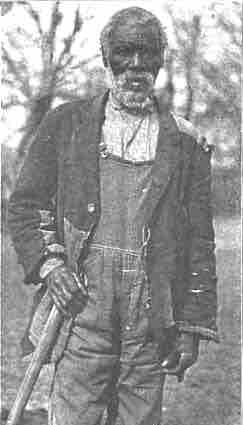Background
The South remained heavily rural after the Civil War, up until World War II. There were only a few scattered cities; small courthouse towns serviced the farm populations. Local politics revolved around the politicians and lawyers based at the courthouse.
Mill towns, narrowly focused on textile production or cigarette manufacturing, began opening in the Piedmont region, especially in the Carolinas. Racial segregation and outward signs of inequality were everywhere and rarely were challenged. Blacks who violated the color line were susceptible to expulsion or lynching. Cotton became even more important than before, even though prices were much lower. White Southerners showed a reluctance to move North, or to move to cities, so the number of small farms proliferated, and they became smaller and smaller as the population grew.
SHARECROPPING
Sharecropping became widespread as a response to economic upheaval caused by the emancipation of slaves and disenfranchisement of poor whites in the agricultural South during Reconstruction.
When slavery ended, the large slave-based plantations were mostly subdivided into tenant or sharecropper farms of 20 to 40 acres. Many white farmers (and some blacks) owned their land. However, sharecropping, along with tenant farming, became a dominant form in the cotton South from the 1870s to the 1950s, among both blacks and whites. By the 1960s both had largely disappeared. Sharecropping was a way for very poor farmers, both white and black, to earn a living from land owned by someone else. The landowner provided land, housing, tools, and seed (and perhaps a mule), and a local merchant provided food and supplies on credit. At harvest time, the sharecropper received a share of the crop (from one-third to one-half, with the landowner taking the rest). The sharecropper used his share to pay off his debt to the merchant. The system started with blacks when large plantations were subdivided. By the 1880s, white farmers also became sharecroppers. Plantations had first relied on slaves for cheap labor. Prior to emancipation, sharecropping was limited to poor landless whites, usually working marginal lands for absentee landlords. Following emancipation, sharecropping came to be an economic arrangement that largely maintained the status quo between blacks and whites through legal means.
In the Reconstruction-era United States, sharecropping was one of few options for penniless freedmen to conduct subsistence farming and support themselves and their families. Other solutions included the crop-lien system (in which the farmer was extended credit for seed and other supplies by the merchant), the rent-labor system (in which former slaves rented land but kept the entire crop), and the wage system (in which the worker earned a fixed wage, but kept none of his crop).
Sharecropping was by far the most economically efficient, as it provided incentives for workers to produce a bigger harvest. It was a stage beyond simple hired labor, because the sharecropper had an annual contract. During Reconstruction, the Freedmen's Bureau wrote and enforced the contracts.
Though the arrangement protected sharecroppers from the negative effects of a bad crop, many sharecroppers (both black and white) were economically confined to serf-like conditions of poverty. To work the land, sharecroppers had to buy seed and implements, sometimes from the plantation owner who often charged exorbitant prices against the sharecropper's next season.
Sharecroppers
Sharecroppers on the roadside after eviction (1936).
RURAL TENANCY
"Rural tenancy" refers to a type of tenant-farming arrangement that a landowner can use to make full use of property he may not otherwise be able to develop properly. A "tenant" or non-landowner will take residency on the property of the landowner and work the land in exchange for giving the landowner a percentage of the profits from the eventual crop.
This system was distinct from the sharecropper. Unlike sharecroppers, who were given all resources by the landowner, tenant farmers rented the land, provided their own tools and mule, and received half the crop. Landowners provided more supervision to sharecroppers, and less or none to tenant farmers. Tenant farming was historically a step up on the "agricultural ladder" from hired hand or sharecropper taken by young farmers as they accumulated enough experience and capital to buy land. The term "rural tenancy" usually describes the situation of previously enslaved people who were then tenants on the landowner's property. The landowner would extend to the farmer shelter, food, and necessary items on credit to be repaid out of the tenant's share of the crop. The farmer could, if he desired, charge the tenant extremely high interest on the advanced pay because there were no lending laws applicable to migrant or tenant workers at the time. This could ultimately result in the tenant owing the landlord more money than his share of the crop at harvest, forcing the farmer to be further indentured to the landowner.
Landowners in the South frequently used this practice after slavery was abolished. Modern day tenancy is much more highly regulated, and these practices are more rare.

Former slave, 1915
A former slave, from an Alabama cotton plantation.